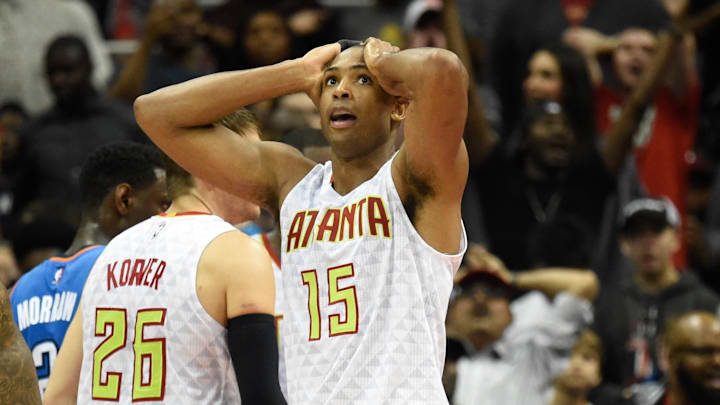The details of the Kobe Bufkin trade raise more questions than they answer. Why did the Atlanta Hawks wait so long to trade for him? Why didn't they accept a rumored offer that was extended in July, centered around Bufkin for Malik Monk? If they were going to receive nothing but cash considerations, why trade him at all?
The move appears to have been made to free up cap space to sign a player while remaining under the luxury tax. But this only makes sense if the Hawks elect to either trade for or sign a player with a contract greater than the minimum, as they can fit any minimum contract without exceeding the luxury tax threshold.
Assuming they avoid the tax, Atlanta has two options: sign a player with the Bi-Annual Exception ($5.1 million annually for two years), or use the $6.7 million trade exception generated by the 7-team Clint Capela trade. So, for the Bufkin trade to make sense, the Hawks are presumably eyeing either a trade piece making less than $6.7 million annually, or a free agent worth more than the minimum but less than $5.1 million.
There is just one player who fits this criteria: Big Al Horford. Well, there are others the Hawks could trade for, but none of the other options rumored to be available would fit Atlanta's timeline. If the team sticks to the win-now mentality employed in the offseason, Horford is the only logical option the Hawks can feasibly acquire.
Horford's perfect fit cannot be understated, but there is a catch
Obviously, being a Hawks legend, rumors of a Horford-Atlanta reunion have been whispered all offseason. But bringing back Horford would be more than just a crowd pleaser - Horford could not fit this team better.
First, he would instantly fill the Hawks' biggest weakness: proven size at the center position. While the team has a promising rotation on paper, Kristaps Porzingis will not play every game and could even miss the playoffs entirely. The Hawks need to have a budget version of Porzingis who can seamlessly fit into the lineup when needed.
And who else would be better than Porzingis's backup from last year? In the 2024 Finals, which Horford and Porzingis won, Horford both started all five games and played more minutes in the Finals than Porzingis due to a torn medial retinaculum. While Porzingis is a trooper for playing through a torn knee ligament, there is only so much you can ask of him.
At this stage in their careers, Horford is just an older, shorter Porzingis. They are both premier stretch fives, play excellent defense in drop coverage, have questionable perimeter defense, and fit within a team that emphasizes ball movement. On a stylistic level, the Celtics did not change one bit when Horford replaced Porzingis.
Porzingis is better than Horford in just about every category at this stage of their careers. But Horford brings a big body whose minutes can ebb and flow with Porzingis's health. Given the early career ties, this move seems like a no-brainer for both parties. Horford can rectify the rift left after his dad's controversial remarks, and the Hawks can solidify their frontcourt rotation.
The only problem is that Horford is expected to sign with the Warriors after the team re-signs Jonathan Kuminga. Just two weeks out from training camp, however, Kuminga still has not been re-signed. Unlike Trae Young, Kuminga is a free agent right now. There has been urgency all summer for both sides to reach an agreement, yet they haven't.
Where there's smoke, there's fire, and Kuminga's contract situation has created a mushroom cloud over the Bay Area. While Horford could always sign with Golden State as he is projected to, will he want to join a team without Kuminga over the most exciting young team in the NBA? If I were Al Horford, I would've signed a deal with Atlanta as soon as the trade went through.
